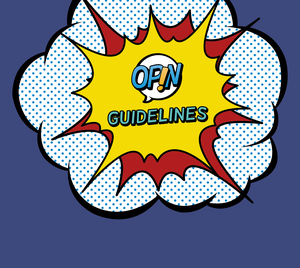Participation phase
You should now have taken care of all the practical preparations, so you are ready to put your project into practice. Now it is all about creating a good environment for the participation to take place – and last but definitely not least to have an impact.
Moderation in e-Participation
A key to a successful eParticipation project is a good online community manager. A community manager is a cross between a guard and a friend, making sure that everything is going the right way. When discussions are side-lined, you should get discussions back on track. To understand what you might be confronted with; we advise training the moderation by publishing your project to a dedicated group of testing users who challenge you online by using OPIN as if it would be the real project. Just don’t forget to clean up before you publish the project for the real users. If your project is at a smaller scale, there usually is no dedicated community manager, so you as an initiator may have to fill this role yourself. See also here for tips on moderation and how to prepare your project.
Once your project is live on OPIN, don’t leave the young users alone for 24 hours. Being an online community manager is potentially more than a 9 to 5 job. However, it is understandably not possible for you to be online day and night. Therefore, before you launch your eParticipation project you should decide how often you will be available online, and then you should communicate this clearly to the young participants. If you can’t be present outside office hours, make it known to the young people when they can expect answers.
7 helpful tips you should keep in mind during your participation phase
- Prepare a step-by-step guide
Create a document where all points of your participation phase are fleshed out in detail, so every team member knows exactly what to do when and where. Don’t forget to include a strategy to make your young users know that you use OPIN, how to get there and how to use it. Use your learnings from testing your project to understand what is most important. More here - Organize a training session
There are always participants and team members that are late to the party. With a training session, you can also get them onboard and integrate them into the participation process. This could be a joint online-walkthrough on the OPIN platform or a webinar where you present the project’s goals and OPIN features in screenshots or alike. More here - Keep an eye on the decision-makers
It can be very useful also to organize a briefing session with them, so they are primed for online and offline events and know exactly what is expected from them. - Do a final check-up and be visibly in control
Provide info material not only via your communication channels, but also in the information section of your OPIN project. Stay in contact with the participants and the decision-makers. Check-in regularly with your team. More here - Introduce rules for good dialogue to the young participants
Your project might be the first time your participants have taken part in a democratic exercise. Therefore, it is even more important that they have a good experience, so they will take part the next time they are invited to express their opinion. OPIN code of conduct might be of use to you in this respect. More here - Ask the young participants to evaluate
Firstly, and as touched upon in the Idea phase, you will learn what went well, and what you could do differently the next time you set up a similar project. Secondly, it is the documentation for decision-makers. More here - Follow-up with your participants
You should keep the young participants updated on the progress of your project. You should communicate the results of the event and explain how they have already been and will be used. You can use the „information section“ and „results section“ in your OPIN project for this purpose.
All texts and resources on this website have been funded by the European Commission as part of the Erasmus+ project DIGY and are published under the following licence:




